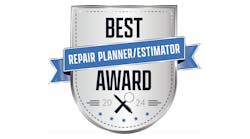Content brought to you by ABRN. To subscribe click here.
I have been fortunate to be an active participant in our industry for a long time. I've been in the industry long enough to have seen the start of, and proliferation of, consolidation.
Going back to the beginning, there was a lot of speculation on the motives, plans, and ambitions of consolidators. Some people wondered about the concept of growing the consolidation business until it is large enough to go public and sell stock, perhaps offering a lucrative exit strategy. Many people suggested that consolidators would eventually gain enough market share to strangle and starve smaller collision repair businesses, thus minimizing competition and adding to their growing market share.
There was speculation that the consolidators would intentionally price themselves very competitively to gain market share. Then, once they eliminated enough competition and gained enough control, they would raise prices to increase profits and overcome any losses from concessions. Thus, they would eventually gain enough control, including minimizing insurer influence, that they could establish whatever prices they wish, control the market, and enjoy high profits and dominance.
Just as consolidation was getting started and becoming a quickly growing trend, insurer direct repair programs (DRPs) also began and were becoming more commonplace. The two complemented each other and consolidators made DRPs a tool to grow their businesses. It seems they would quickly partner with insurers, and over time, would make more and more concessions. Insurers enjoyed the cost concessions and other benefits and incorporated them more into DRP programs for all participants.
Over the years, this model remained relatively consistent for consolidator/insurer relations, as well as the nature of DRPs. Today, we have fewer than half the number of shops in our country. The consolidators I primarily refer to are those larger ones who have been around 20 or more years and are the top 3 or 4 in terms of size and sales volume.
Today, we have a new wave of regional MSO’s growing into consolidators with the help of capital equity funds. This is adding to the influence and market share of consolidators as a whole. Some insurers have some unique DRP arrangements with some consolidators.
Some may argue that this trend of consolidation and DRPs has stifled the growth opportunities for other collision repairers and kept labor rates lower than they would have been otherwise. Labor rates in the traditional auto mechanical/service industry have risen much more significantly than collision repair rates over the years. In fact, when I started my first auto repair job in a dealership, the mechanical and collision labor rates were the same. Now, most typical collision rates are a third or half of typical mechanical rates.
Now I am hearing discussions that most — or perhaps all — of the major consolidators are asking for significant rate increases. Some people tell me it’s a demand, not an ask, and I’ve been hearing talk they are talking rate increases in the range of 10 percent to 20 percent.
I wondered if it was true, so I started talking to others in the industry, though in a cautious way. One must be careful of anti-trust laws that prohibit us from working with other shops to uniformly change rates. Essentially, we can call and ask what rate another business charges. Similarly, we can answer those questions if they are asked of us, but we must be cautious about uniformly raising rates in a planned and similar fashion to control market pricing, and it is unwise to even create that impression to avoid any potential investigation or suit, which could end up being very expensive.
I have heard enough similar rhetoric from a number of shops and insurers -- in various different markets -- to know that something is going on. There appears to be truth in what I heard about in discussion of significant rate changes.
Assuming it is true, and I tend to believe there is at least some truth in it, and probably a lot, one asks, "Why? What it is that is going on?"
We know the rate of inflation is high and is rising. Note the chart above from CCC.
The chart indicates that in December 2021, inflation rates for body repair were exceeding 10 percent, and we know that there is a significant and growing shortage of staff for collision repair, especially technicians. This is driving up wages, and we continue to hear about collision repairers offering large signing bonuses. We know parts prices are increasing (see the chart above), and the cost of paint and materials is rising significantly. (I have heard of some paint companies raising prices 10 percent, with the possibility of more price increases coming.).
Insurers are also experiencing some staff shortages. Thus, claim handling is slower, especially in non-DRP environments. Parts shortages are delaying jobs and many shops are carrying more work in process to keep staff busy. Currently, in-shop file handling is more complicated, partially due to vehicle complexity and more sophisticated methods documentation of more repair steps and parts/material purchases. All of this slows cycle time, creates more chaos, and increases costs.
While insurers have immense influence and power within our industry, that has been diminished a bit, thanks to the increased influence of vehicle manufacturers. New technologies and OEM certifications have required shops to follow the OEMs’ direction more closely. On top of that, some OEMs are getting into the business of insurance.
So, assuming that big rate increases are starting, is it all because of the cost increases I described or are we at a point where the consolidators now feel more emboldened? Are we, after all these years, seeing what was predicted and are the turbulent market factors adding to the perceived size and strength of the consolidators to cause them to enact dramatic change, even to the point of demanding higher rates from insurers? if so, and if they are successful in enacting this significant change, will we see them do more?
These are exciting times. For those of us who relish studying our industry trends, we will be more than entertained and intrigued.



